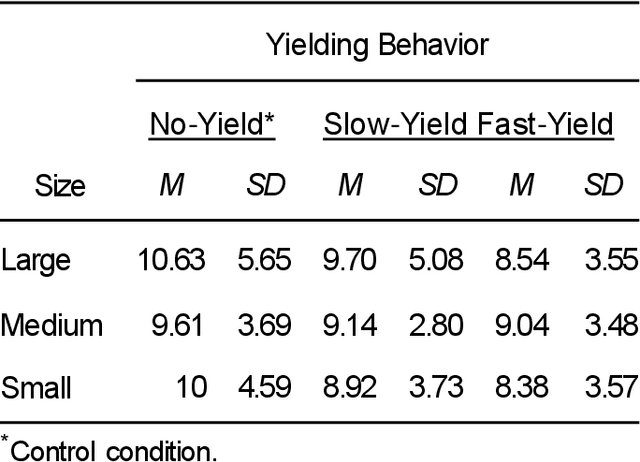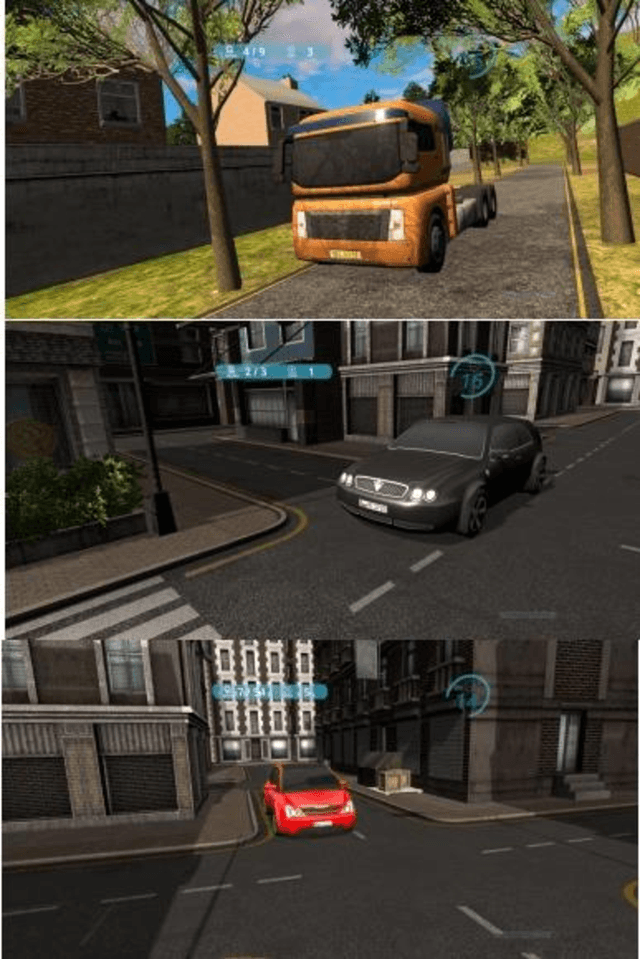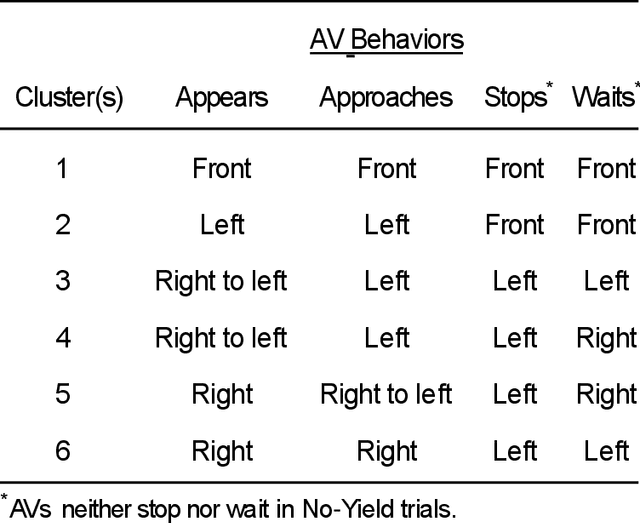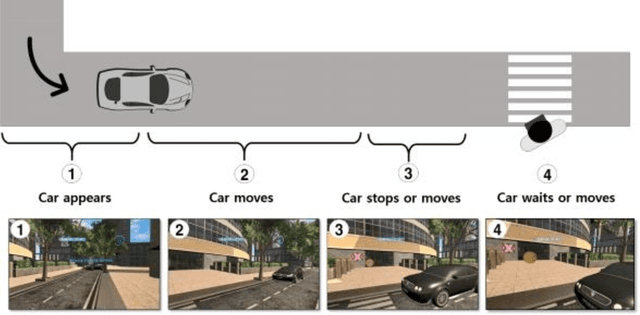Yong-Eun Rhee
Gentlemen on the Road: Effect of Yielding Behavior of Autonomous Vehicle on Pedestrian Head Orientation
May 16, 2020



Abstract:Autonomous vehicles can improve pedestrian safety by learning human-like social behaviors (e.g., yielding). We conducted a virtual reality experiment with 39 participants and measured crossing times (seconds) and head orientation (yaw degrees). We manipulated AV yielding behavior (no-yield, slow-yield, and fast-yield) and the AV size (small, medium, and large). Using Dynamic time warping and K-means clustering, we classified the head orientation change of pedestrians by time into 6 clusters of patterns. Results indicate that head orientation change of pedestrians was influenced by AV yielding behavior as well as the size of the AV. Participants fixated on the front most of the time even when the car approached near. Participants changed head orientation most frequently when a large size AV did not yield (no-yield). In post-experiment interviews, participants reported that yielding behavior and size affected their decision to cross and perceived safety. For autonomous vehicles to be perceived as more safe and trustful, vehicle-specific factors such as size and yielding behavior should be considered in the designing process.
 Add to Chrome
Add to Chrome Add to Firefox
Add to Firefox Add to Edge
Add to Edge